 Welcoming this new year with an overwiew of the highs and lows of my 2016/2017 foodie adventures:
Welcoming this new year with an overwiew of the highs and lows of my 2016/2017 foodie adventures:
–The best meals of 2016/2017:
Le Coucou (NYC), Sushi Azabu (NYC), Dons Bogam (NYC) , Hvor (Montreal) — but Chef S’Arto Chartier-Otis does not work there anymore, Ichimura (NYC) but Chef Ichimura does not work there anymore, Nozy (Montreal), Cocoro (Montreal), Argo (Fira), TO Ouzeri (Fira), Old Tavern of Psaras (Athens), Mere Michel (Montreal), Kelsey & Kim’s southern cafe (Atlantic City), Junior’s (Brooklyn), Jordan’s lobster dock (Brooklyn), The River Café (Brooklyn), La Caye (Brooklyn), The steak at Wolfgang steakhouse Park Avenue (NYC)
–The most memorable food items of 2016/2017:
1.Le Gâteau Mollet du Marquis de Béchamel et la Glace Fondue à la Rhubarbe (Pres d’Eugenie)
Wall of fame material.
2.Rutabaga fettucine, black truffles, hazelnut butter, mimolette cheese (Hvor, Montreal) – Lifetime achievement award!!!
3.Roasted pineapple (Le Coucou) –
They all say they can make it. In reality, few, very few can pull out some roasted pineapple of this quality.
–My GO-TO places:
La Frite à Brigitte (Vaudreuil-Dorion). When I discovered Quebecois classic food, I was filled with awe. Simple French-based food but full of dazzling flavors. Quebecois people have an awesome palate. They have glorious food items like the Poutine. French fries, gravy, cheese curds. Sounds straightforward, right? Perhaps, but Poutine is one of the best inventions of all times. It is so tasty, so well thought, so great. La Frite à Brigitte is currently my GO-TO place for their superb poutine . I keep going there for more. La Frite à Brigitte Addr: 347 Boulevard Harwood, Vaudreuil-Dorion, QC Phone: (450) 510-5151. My other GO-TO place in Montreal is Reuben’s Deli & Steakhouse. I never tried any steak there, but their delis are some of the most refined and better executed of this globe. They seem to pull off great things after great things at Reuben’s: some of the best strawberry cheesecakes in town, the best sliders I ever had in Montreal, etc. I am not implying that it is the restaurant of the century, but at whatever it does, it consistently outshines its competitors. Reuben’s Addr: 1116 Sainte-Catherine W. Montreal, Qc Phone: 514-866-1029. My other go-to places in Montreal: Gyu-Kaku, the current best local table top bbq grill restaurant. Ichi Go Ichie (the best Isakaya, right now, in Montreal) , Escondite (the best local tacos and tequila bar), Panama, my preferred Greek eatery in town, as well Loukouman Addr: 522 Jarry Ouest Montréal, Québec, H3N-1E9 Phone: 514-272-5272 (indeed, some of the best loukoumades in town even though they do not use the pricey honey that I am usually fond of, but regardless, they are as fine as you will get them in town, better than the ones of Mr Puffs, most Greeks will tell you, and that is what I think, too). Another go to spot is Nouilles de Lan Zhou. I also tried Souvlaki Bar (the one in Laval) as well as the Marathon that is at 3313 Boulevard des Sources, Dollard-des-Ormeaux (the Marathon in Laval is disappointing) and both were good by Montreal Souvlaki Chain eateries (food cooked to order, the pork souvlaki as tender and meaty as it should at Souvlaki bar, the gyros you should prioritize at Marathon, the ingredients are fine at both places). Talking about Greek eateries in Montreal, I had some of the best pork souvlaki in Montreal around 25 years ago at a place called Marvens in Parc Extension. Marvens used to also serve one of the very best homemade sauce, their special sauce boasting a light orange hue. Remembering how great it used to be, I went back this past summer and I am saddened to submit that Marvens’s star has faded: the special sauce is so sour, nowadays, that it made the food almost inedible. Inedible is also how I would describe the once stellar pork souvlaki which consistency is nowadays dry and tough. People who knew Marvens 25 years ago will be in a serious shock. Away from Montreal, I am a big fan of Jordan’s lobster dock (Brooklyn) that I never fail to visit every time I find myself in New York. Their seafood is so popular that it is even exported to Canada. This is the best seafood shack of New York city. Jordan’s lobster dock 3165 Harkness Ave, Sheepshead Bay – Brooklyn, NY 11235 United States; Phone number (718) 934-6300; URL: http://www.jordanslobster.com .
–The best food items of 2016/2017:
1.Mustard ice cream, grilled leavened bread, green tomatoes (Hvor, Montreal) – WOW!
2.Carpaccio of Quebec’s lamb, grated prosciutto (Hvor, Montreal) – You die and are resurrected just for that!
3.Braised oxtail / potatoes (Le Coucou, NYC) – Even a 3 star Classic French Michelin restaurant in France would be J*E*A*L*O*U*S!!
4. Sea eel (anago) nigiri (Ichimura,NYC) – I thought this nigiri was flown in straight from one of the best sushiyas of Tokyo!!
5.Langue de boeuf/ pommes/arachides/vinaigrette gingembre (Marconi, Montreal) – Ok, my life did not feel shattered, but damn ..that was GOOD!!!!!!!!!!!!!!
6. The ramen at Cocoro (Montreal) – SLURP! …because, in the ramenya world, that is the way to show how enchanted you were, about your ramen!
7. Grilled goat at Petite Ya quartier (Mtl) – With flavors like these….Oh you, Mother Africa, you make it impossible …. to stop loving you!
-The LOWS:
-The overall experience at Torishin (NYC)
-The oysters at Docks Oyster House (Atlantic city)
-All the food at Vizantino taverna (Athens)
-My meal at Miss Favela (Brooklyn)
–The reviews that you have perused the most in 2017: The review on Montreal steakhouses is the one that you keep favoring the most year after year. It is an old review, dating back to 2013. Definitely not the review that I was expecting to captivate any attention on this blog, but somehow you like it. At some point I did consider removing all posts of more than a year on this blog, as they become irrelevant, but it would be a nonsense to do so (I never saw a food blogger proceeding that way). The second most popular review was the one on Sushi Sawada (Tokyo). I am glad to see that you were interested by that review as it proves one thing: people are, sometimes, more interested by the content of a review, the technical aspect of the food that lies before them (is it well conceived, does it respect the fundamentals of good cooking, you know…the right texture, the right temperature, etc) , rather than food porn (sexy instagram-esque pictures — I was ready to shoot the pictures, actually, but we have got to respect the rules of a house, which, in the case of Sawada, forbids photo taking to normal diners). The 3rd most popular posts are the ones on Dons de la Nature(Tokyo) and this post I wrote on Gault Millau Montreal/Yakitori Otto/Bombay Mahal Tali/Chez Jano.
4th most popular post, among you – The review on Argo (Fira) as well as the one on Kam Fung (Montreal)
5th – L’Arpege (Paris)
6th – Ishikawa (Tokyo)
7th – Nice (Cote d’Azur)
8th – Sushi Oono (Tokyo)
9th – Kanbai (Montreal)
This web blog’s main intent is to cater to some close foodies with whom I share information about places where to dine at. In the process, it benefits to the rest of the web as well – obviously. It is also an opportunity to have a firm idea of how the information on the web is manipulated by many individuals of the restaurant world (expecting otherwise would be utterly naive … ): although I was pleasantly surprised by the considerable amount of hits on the 9 posts I have just mentioned above (numbers that could almost rival those web sites that have a PR machine behind them — certainly a surprise for a web site that is anonymous like mine), it is clear that some restaurants around the globe are paying the search engines to filter what can be found on them. That makes sense as it is all about business, protecting business, masquerading their failures as success, etc, and it takes a non restaurant-friendly source like the current blog to remind you of that. Apparently, based on the wordpress stats of this blog, you do not care for some of the very best restaurants of this globe … Trattoria Vecchia Roma offers some of the best Traditional Cucina Romana in the world. Sushi Azabu, Ichimura (New York) are some of the best sushiyas outside of Japan. Le Coucou (New York), one of the best French restaurants outside of France. Dons Bogam (New York), one of the best Korean BBQ outside of South Korea. Le Casse Noix (Paris), has some of the best riz au lait and Ile flottante in the world. Readers of this blog could not care less. Yeah, yeah, yeah…I believe that  truly exists. Lol…a nonsense as those restaurants are some of the most popular of this planet…
truly exists. Lol…a nonsense as those restaurants are some of the most popular of this planet…
Paris lost one of its best classic French restaurants (Moissonier) – Moissonier , which had the best French pike quenelles as well as rice cake of Paris, did close this summer. Paris will never be the same without this restaurant which served classic French food from Lyon and Franche-Comté as remarkable as the impressive resume of its Chef (an Ex sous Chef of culinary legends such as Alain Senderens, The Troisgros family). Certainly the sign that people, nowadays, are more interested by hype rather than substance: the closure of this restaurant did not make the headlines… Moissonnier Addr: 28, rue des Fossés Saint-Bernard, Paris, Phone: 01 43 29 87 65
My special journey in Fontjoncouse – According to the Michelin guide, their 3 star restaurants “worth a special journey”. L’Auberge du Vieux Puits in Fontjoncouse is a 3 star Michelin restaurant that is considered as one of the very best French restaurants in the world by those in the know. I had lunch and dinner there. You will find more, about my meals at L’Auberge du Vieux Puits, here.
A stopover in Northern Catalonia’s Perpinyà – At approximately 60 kms away from Fontjoncouse, you will find Perpignan. Northern Catalonia was Spanish, then became French in 1659. It is an area that the French call Pyrénées-Orientales. In Perpignan, I tried Le Divil which was recently credited with the title of the best restaurant for meats in France by Internationally acclaimed steak expert Franck Ribière of the movie ‘Steak Revolution‘ (click here for that review) .
 I was born to the sound of the sea waves hitting the rocks – It is magical. It really is, because all your life you remember the smell of that sea, the noise of the waves hitting those rocks and the treasure you sometimes found on those rocks. Most of the time, on those rocks, there were .. oysters! One of the ‘gemstones’ of the sea. Decades later, oysters do not stop to fascinate me. While in Southern France, I had another opportunity to flirt with them, once again. This time, they were in one of France’s most important destinations of oysters, Leucate. Leucate is a commune in the department of Aude, a department with some of France’s most picturesque communes (Peyriac-de-Mer, one of its communes, has the potential to leave the most in awe). Most part of Leucate is composed of swathes of beautiful landscapes (beaches, blue waters, the sea, the mountains). Unexpectedly, the oysters ..those jewels of the sea…well, it is in the less pretty part of Leucate that you will find them. An area called Le Grau de Leucate where less than 30 oyster stands are offering the local Cap Leucate oyster. An hour away from Leucate, I had the opportunity to taste some dazzling oysters in Bouzigues which is located on the northern side of the Étang de Thau (famous for its oysters). In Perpignan, I pursued with the spéciale de claire and pousses en claire of Alain Laugier Goulevant from Marennes-Oléron and I feasted on some cupped (creuses) Prat-Ar-coum oysters as well as some Aber-Vrach flat (plates) oysters of Yvon Madec at the seafood restaurant 7 ème Vague Boniface . I also found some of my preferred oysters of France, Yves Papin ‘s bivalves, in Perpignan. All world class oysters.
I was born to the sound of the sea waves hitting the rocks – It is magical. It really is, because all your life you remember the smell of that sea, the noise of the waves hitting those rocks and the treasure you sometimes found on those rocks. Most of the time, on those rocks, there were .. oysters! One of the ‘gemstones’ of the sea. Decades later, oysters do not stop to fascinate me. While in Southern France, I had another opportunity to flirt with them, once again. This time, they were in one of France’s most important destinations of oysters, Leucate. Leucate is a commune in the department of Aude, a department with some of France’s most picturesque communes (Peyriac-de-Mer, one of its communes, has the potential to leave the most in awe). Most part of Leucate is composed of swathes of beautiful landscapes (beaches, blue waters, the sea, the mountains). Unexpectedly, the oysters ..those jewels of the sea…well, it is in the less pretty part of Leucate that you will find them. An area called Le Grau de Leucate where less than 30 oyster stands are offering the local Cap Leucate oyster. An hour away from Leucate, I had the opportunity to taste some dazzling oysters in Bouzigues which is located on the northern side of the Étang de Thau (famous for its oysters). In Perpignan, I pursued with the spéciale de claire and pousses en claire of Alain Laugier Goulevant from Marennes-Oléron and I feasted on some cupped (creuses) Prat-Ar-coum oysters as well as some Aber-Vrach flat (plates) oysters of Yvon Madec at the seafood restaurant 7 ème Vague Boniface . I also found some of my preferred oysters of France, Yves Papin ‘s bivalves, in Perpignan. All world class oysters.
Cannot wait to try world famed Sorbillo Pizza in New York – New Yorkers, those lucky bastards! Lol. They attract the best of the best! Sushi Saito (Tokyo) is the current best sushiya in the world. Guess what… they had one of their Chefs who was ready to go working abroad, but it had to be ..guess where…in NYC, of course (Chef Shion Uino now working at Sushi Amane at Mifune ). You remember the legendary Jiro, of Jiro Dreams? Well, that is not ‘new’ news anymore, but his apprentice Nakazawa (one of the main characters of the movie Jiro Dreams) is ..guess where? Examples of great Chefs attracted by New York are endless (Ferran Adria, Joel Robuchon, Alain Ducasse, Rene Redzepi, Massimo Bottura, Enrique Olvera), with the latest being Legendary Neapolitan Pizzaiolo Gino Sorbillo. I have long been fascinated by Pizze, particularly the Neapolitan Pizza. Actually, my next major ‘foodie’ project is to spend 3 months in Naples and review every single of their Pizza shops (a bit like what this guy did, many years ago, but I will stick to Naples, world’s ‘temple’ of the Neapolitan Pizza). It took me a while to be prepared for this project: first, I wanted to spend years tasting all sort of Neapolitan pizze, understanding the techniques, the ingredients, etc. I did that for the past 20 years and do, consequently, nowadays, feel ready for the last step before visiting all the Pizza shops of Napoli: doing an apprenticeship at 3 of the best Pizza shops of Napoli. This will not be easy, perhaps even impossible, but where there is a will, there is a way! If that happens, the 3 shops will not be reviewed (I am a bit ‘old school’ about this, and do have nothing against those who think otherwise — I mean we are in an era where most critics do not care about such details — but I insist on never reviewing establishments that I am familiar with), but revealed, of course (I would like the relevant blog to feature videos of what I am learning at those shops, as well as detailed written accounts of my journey as an apprentice pizzaiolo in Napoli) . Regarding Sorbillo NYC, expect the food journalists of NYC to review it inaccurately as they never went to Napoli and will review this shop with their North American taste. You will not fail to identify those who have no clue of what to expect from a Neapolitan pizza: they will complain about the crust being a bit limpy (Americans prefer a crispier crust). Well, it is the way it is done in Napoli, folks! If you want a pizza which pie is crispy, them opt for a Roman style pizza or any of your usual Italian-American pizze. In the meantime, Sorbillo NYC, here I come ! Zia Esterina Sorbillo 334 Bowery Street at Bond Street, NYC Phone: (646) 678-3392 Facebook: https://www.facebook.com/SorbilloNYC/
The GREATEST CHEFS of the globe – My generation was gifted with some of the most talented Chefs of all time. One of them was Jacques Maximin. Chef Maximin has inspired legends such as Ferran Adria as well as highly regarded Chefs like Franck Cerutti, Christophe Moret or Bruno Cirino. Nowadays, he is not an active Chef anymore. He stood out for his impressive creativity. He was able to create, with limited time, what many of the other legendary Chefs would, sometimes, take ages to achieve. Perhaps the culinary Genius who had the more wit, the best natural instinct when it came to Classic French cuisine:
Series “Follow this CHEF” – There are NOT that many TRULY talented world class Chefs around the globe at this moment. Many are marketed as such, for sure, but few are THAT talented. One superb talent is Chef David Bizet. He is largely considered, by those in the know, as one of this globe’s most underrated star Chefs right now. David is relatively young, and yet he has been the right hand of several multiple michelin starred Chefs (Christian Lesquer, Phillipe Legendre, Eric Briffard). David will, sooner or later, have its 3 Michelin stars and he will deserve them (which is not the case of some Michelin triple starred chefs who earned their stars just by following following the ‘checklist’ of what it takes to get there). For now (January 2018), David is at the helm of L’orangerie (Four seasons) in Paris.
New York City’s Michelin Stars for 2018 – I do not understand the Michelin guide (yeah, I know, it is trendy to say so, in the anti-Michelin circles, but it is NOT better in the anti-Michelin world, neither! ) on one hand, you have plenty of Japanese restaurants in NYC that are awarded stars, and deservedly so… because, yep, truth be told, we are talking about hard working people, proud of their craft rather than a bunch of money hungry bums disguised as restaurateurs as widely seen elsewhere in some other supposedly food cities. But then, why demoting Jean-Georges? I often visit NYC and do know Jean-Georges well and there is no difference between Jean-Georges in its current form Vs the one of the other years. Same for Daniel, btw! Is it, because Michelin, came to the conclusion that they should not have been awarded 3 stars in the first place? Well, if that is the reason, then dear Michelin, you should have thought about that…in the first place! Is it because both Jean-Georges and Daniel do not have the “grandiose’ looks and feel of 3 star Michelin restaurants like Per Se and Eleven Madison Park? The special ‘cachet’ of Masa? I am sure NOT, as Michelin does not have a limited vision of what the restaurant world should be about: to the contrary of what the anti-Michelin lobby is trying to sell to us, you do not have 1 type of restaurant that Michelin favors. Michelin stars were awarded to plenty of restaurants that do, actually, fit the mold of its competitors and detractors — for example, L’Arpège and L’Astrance in Paris, which are restaurants that Michelin competitors such as Le Fooding and San Pellegrino top 50 restaurants do regard as ‘non-Michelin enough’, ‘non-Palace enough’. Well, in reality, both L’Arpège and L’Astrance have … 3 Michelin stars! Examples like those abound: Mirazur, Osteria Francescana, Asador Etxebarri are all San Pellegrino top 50 restaurants ‘bestsellers’. Well, they ALL have Michelin stars, too! Business is business…you can “bark” as loud as you want, but at the end of the day, they are all competing for the same thing! At least, Michelin has managed, up to now, to avoid laughable decisions such as marketing an ordinary restaurant which best meal is spaghetti and lobster …. as one of the top 100 best restaurants of the globe! A recent “exploit” in the world of one of Michelin’s competitors (if, at least, that was the best spaghetti or the best obster out there, but no..not at all, not even close….Rfaol!). Back to Michelin NYC 2018… I am not done with it: Torishin, the 1 star Michelin yakitori…can someone tell me how no Michelin inspector ever ran into the mixed bag of a service that did put me off when I was there (as reviewed here). What…??..the bad waiters I met at Torishin are nowhere to be found when the Michelin inspectors do visit Torishin? That mixed service would be BAU at a hole in a wall eatery managed by bums, nothing to do with a Michelin star restaurant!
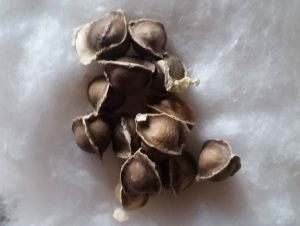 My next ‘immediate’ foodie project – It is about time, for me, to take my passion for food to another level. Cooking since my tender childhood and submitting my palate to all sorts of taste sensations from all around the globe as well as trying to see what the girls and boys of the restaurant industry were up to (the sole reason I enjoyed visiting restaurants) was useful, for sure. But now, I have seen what I had to and I am more than ready for the next steps: as mentioned earlier on, learning how to perfect the art of the Neapolitan Pizza, in Naples, is one of the next projects that is of interest. That can’t be done right away, though. Therefore, my next immediate foodie project is to focus on pushing taste sensations to dimensions that we are not used to, this side of our sphere. Lately, I have been experimenting a lot with the moringa (pictured above). It is ‘trendy’ , in the western world, to introduce exotic ingredients in our vocabulary, therefore the moringa is on everyone’s mind, but what matters to me is how complex, in terms of taste sensations, the moringa is. It is rare, in one single ingredient, to get to experience with a collection of clashing taste sensations like the ones delivered by the moringa. The moringa, on a culinary perspective, …it is a real ‘pain in the butt’, but as with everything that is not ‘easy to deal with’, it leads to interesting opportunities..
My next ‘immediate’ foodie project – It is about time, for me, to take my passion for food to another level. Cooking since my tender childhood and submitting my palate to all sorts of taste sensations from all around the globe as well as trying to see what the girls and boys of the restaurant industry were up to (the sole reason I enjoyed visiting restaurants) was useful, for sure. But now, I have seen what I had to and I am more than ready for the next steps: as mentioned earlier on, learning how to perfect the art of the Neapolitan Pizza, in Naples, is one of the next projects that is of interest. That can’t be done right away, though. Therefore, my next immediate foodie project is to focus on pushing taste sensations to dimensions that we are not used to, this side of our sphere. Lately, I have been experimenting a lot with the moringa (pictured above). It is ‘trendy’ , in the western world, to introduce exotic ingredients in our vocabulary, therefore the moringa is on everyone’s mind, but what matters to me is how complex, in terms of taste sensations, the moringa is. It is rare, in one single ingredient, to get to experience with a collection of clashing taste sensations like the ones delivered by the moringa. The moringa, on a culinary perspective, …it is a real ‘pain in the butt’, but as with everything that is not ‘easy to deal with’, it leads to interesting opportunities..
May 2018 be joyous, fruitful for the epicurious in us and above all….DELICIOUS!







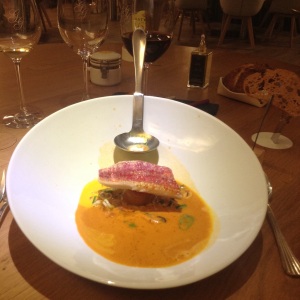


























































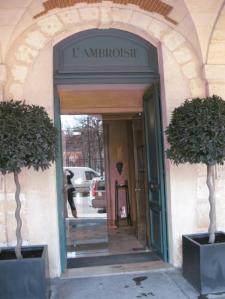
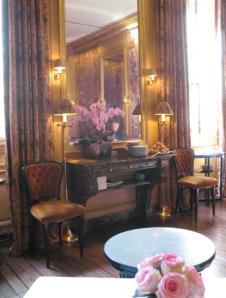
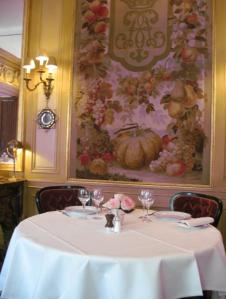

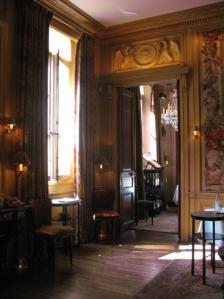


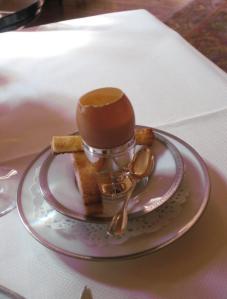
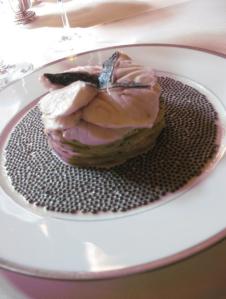
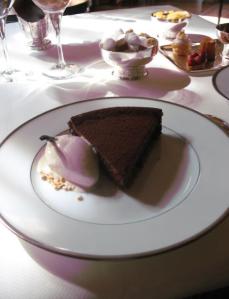
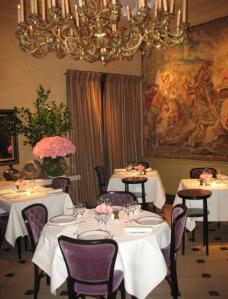
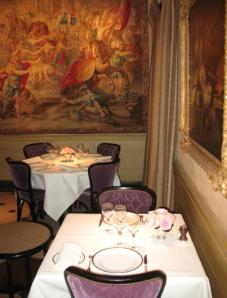
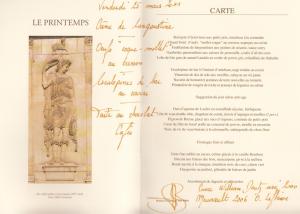
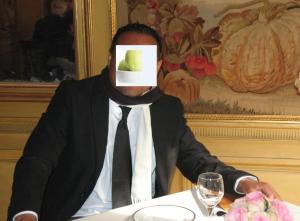











You must be logged in to post a comment.